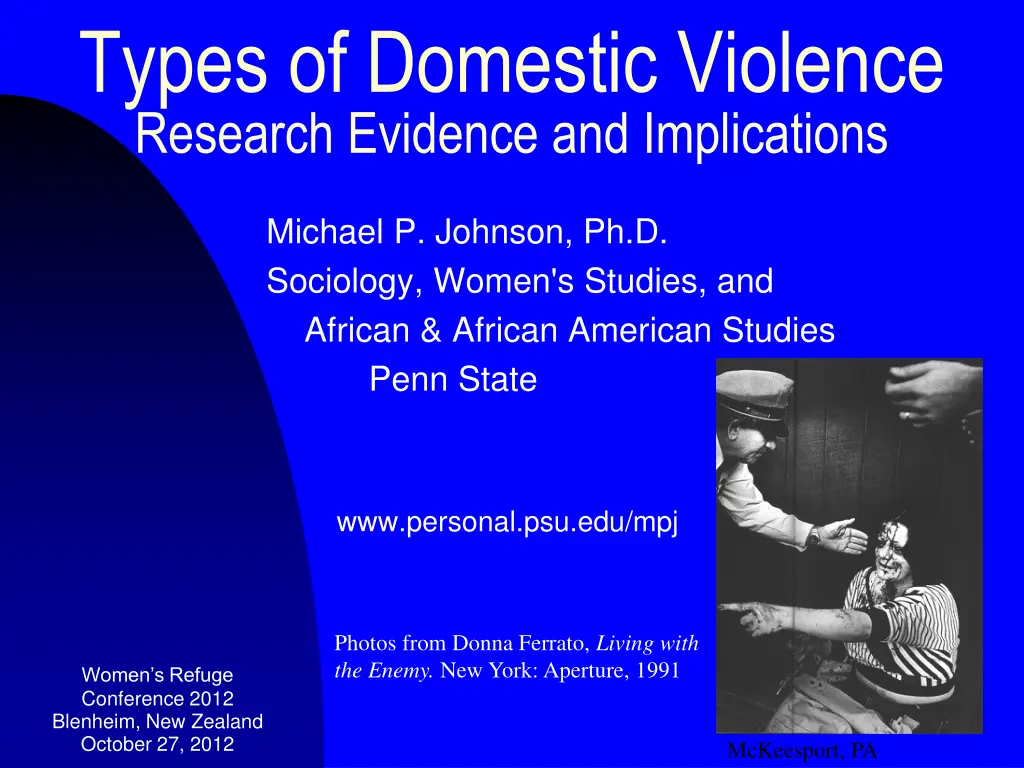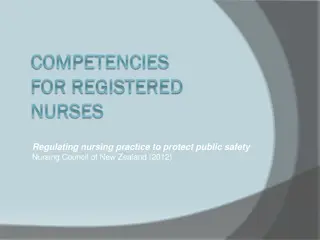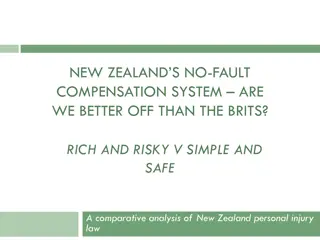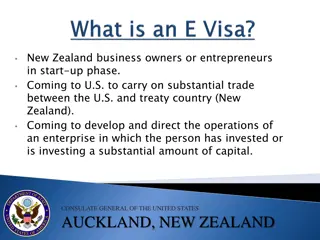
Understanding Types of Domestic Violence Research Evidence and Implications
Explore the complex dynamics of domestic violence through different research studies, challenging stereotypes about gender-based violence. Learn about the variety of partner violence types and the implications for social policy and intervention.
Download Presentation

Please find below an Image/Link to download the presentation.
The content on the website is provided AS IS for your information and personal use only. It may not be sold, licensed, or shared on other websites without obtaining consent from the author. If you encounter any issues during the download, it is possible that the publisher has removed the file from their server.
You are allowed to download the files provided on this website for personal or commercial use, subject to the condition that they are used lawfully. All files are the property of their respective owners.
The content on the website is provided AS IS for your information and personal use only. It may not be sold, licensed, or shared on other websites without obtaining consent from the author.
E N D
Presentation Transcript
Types of Domestic Violence Research Evidence and Implications Michael P. Johnson, Ph.D. Sociology, Women's Studies, and African & African American Studies Penn State www.personal.psu.edu/mpj Photos from Donna Ferrato, Living with the Enemy. New York: Aperture, 1991 Women s Refuge Conference 2012 Blenheim, New Zealand October 27, 2012 McKeesport, PA
Are Women Really as Violent as Men? Anti-feminist politics and conflicting data Explaining the ostensible contradictions A Control-based Typology of Partner Violence The three major types Gender differences and sampling biases Dramatic Differences Among the Types Violence severity, frequency, mutuality, and escalation A few health and relationship consequences Different risk factors for perpetration Policy Implications
The Anti-feminist Backlash Attack Feminist Research Deny the Role of Gender Attack Programs that Address Violence against Women The gender paradigm. . . biased social science. Dutton et al., 2010 Men as likely to suffer spousal abuse, Statscan says. Globe and Mail July 27, 2002 (Web site) the Ontario Government may be in violation of their obligations [because] the existing network of shelters for victims of family violence exclude[s] men . The Men s Project, February 2009: Submission to the Ontario Ministry of the Attorney General
General Surveys Indicate That Women Are as Violent as Men Heterosexual intimate partner violence by gender Data Source Men Women Canada, GSS, 2004 Norway, Statistics Norway, 2003 New Zealand, Dunedin, 2002, 25 year olds Sweden, university students, c. 2001 U.S., NSFH, 1988 U.S., NFVS, 1975 the beginning 54% 55% 39% 52% 53% 51% 46% 45% 61% 48% 47% 49%
But Agency Studies Indicate That Men Are the Primary Batterers Heterosexual intimate partner violence by gender Data Source Sweden, partner assault, 2010 New Zealand protection orders, 2007 New Zealand hospitals, IPV assaults, 2006 Canada, spousal homicide, 1995-2005 U.S., FBI, partner assault,1996-2001 U.K., emergency rooms, 1988 Ontario, family court, 1982 Men 80% 90% 91% 82% 75% 83% 94% Women 20% 9% 9% 18% 25% 17% 6%
Differentiating Among Types of Intimate Partner Violence Explains the Contradictions There is more than one type of partner violence One type is perpetrated mostly by men, another by both men and women Agency studies are dominated by the male- perpetrated type, general surveys by the gender-symmetric type
Are Women Really as Violent as Men? Anti-feminist politics and conflicting data Explaining the ostensible contradictions A Control-based Typology of Partner Violence The three major types Gender differences and sampling biases Dramatic Differences Among the Types Violence severity, frequency, mutuality, and escalation A few health and relationship consequences Different risk factors for perpetration Policy Implications
Intimate Terrorism Violent Coercive Control Violent Resistance Resisting the Intimate Terrorist Situational Couple Violence Situationally-provoked Violence
Intimate Terrorism Violent Coercive Control Pattern of violent coercive control The basic pattern is the use of multiple control tactics (violent and non-violent) to attempt to take general control over one s partner Specific control tactics vary from case to case, involving different combinations of economic control, isolation, emotional abuse, intimidation, use of children, and other control tactics In heterosexual relationships, perpetrated primarily but not exclusively by men Generally rare, but common in agency settings
Intimate Terrorism/Domestic Violence Adapted from Pence & Paymar, 1993.
Violent Resistance Resisting the Intimate Terrorist Many victims respond with violence Not necessarily self-defense In heterosexual relationships, most violent resistors desist and turn to other tactics, either to mitigate the violence or to escape Generally rare, but common in agency settings
Situational Couple Violence Situationally-provoked Violence Conflicts turn to arguments that escalate Both men and women do this Men s violence more likely to injure and frighten Huge variability 40% only one incident, but can involve chronic and severe violence Variable causes of chronic SCV include chronic conflict, substance abuse, anger issues, communication issues, and others By far the most common type
Gender Symmetry/Asymmetry by Type of Violence (1970s Pittsburgh: Violent husbands and wives) Husbands 97% Wives 3% N 97 Intimate terrorism Violent resistance 4% 77 96% Situational couple violence 146 56% 44% 2000s Britain: IT 87% male; VR 10% male; SCV 45% male
The Biases of Major Sampling Plans (Violent men: Pittsburgh) General Sample (n = 37) Shelter Sample (n = 50) Court Sample (n = 34) Intimate terrorism 14% 68% 78% Violent resistance 0% 0% 2% Situational couple violence 29% 18% 86% 2000s Britain: IT by sample type: General = 13%, Shelter = 88%.
Are Women Really as Violent as Men? Anti-feminist politics and conflicting data Explaining the ostensible contradictions A Control-based Typology of Partner Violence The three major types Gender differences and sampling biases Dramatic Differences Among the Types Violence severity, frequency, mutuality, and escalation A few health and relationship consequences Different risk factors for perpetration Policy Implications
ma at te e T Te er rr ro or ri is sm 75% escalated 29% mutual Johnson, 2006 Mixed sample, married Pittsburgh, 1970s I In nt ti im Shelter 80-90% 76% severe m General 2-4% General Motive: To control the relationship S Si it tu ua at ti io on na al l C Co ou up pl le e V Vi io ol le en nc ce e 28% escalated 69% mutual 10-20% 28% severe General 12-18% Shelter Situational Motive: To win, get attention, get even, etc .
ma at te e T Te er rr ro or ri is sm 60% feared for life Ansara & Hindin, 2010 Previous/current partners Canadian GSS 2004 I In nt ti im m 57% frequent violence General Motive: To control the relationship S Si it tu ua at ti io on na al l C Co ou up pl le e V Vi io ol le en nc ce e 9% feared for life 8% frequent violence Situational Motive: To win, get attention, get even, etc
Health & Relationship Outcomes by Type of Male Violence (various studies) SCV 25% IT p<.001 Injury, latest incident U.S., NVAW 49% p<.001 Severe injury, ever Pittsburgh 28% 76% p<.001 Post-traumatic stress* U.S., NVAW 37% 79% p<.001 Suicidal behavior Chicago, CWHRS 18% 37% p<.001 Low marital happiness Pittsburgh 13% 50% * Percent above the median for female victims of partner violence
Different Risk Factors Studies by Various Social Scientists Different Locations and Sample Types Different Measures Intergenerational transmission SCV d = +.11 IT d = +.35 Marriage SCV b = -.62 IT b = +.58 Gender traditionalism SCV d = -.14 IT d = +.80
Are Women Really as Violent as Men? Anti-feminist politics and conflicting data Explaining the ostensible contradictions A Control-based Typology of Partner Violence The three major types Gender differences and sampling biases Dramatic Differences Among the Types Violence severity, frequency, mutuality, and escalation A few health and relationship consequences Different risk factors for perpetration Policy Implications
Primary Prevention/Education Intimate terrorism Equality and respect Violent resistance Intimate terrorism danger signs Safety planning Entrapment/escape issues Situational couple violence Sources of conflict, e.g., poverty Anger management, communication, substance abuse
Screening/Triage Different models for different clients To screen we need to assess coercive control and violence for both partners Safety first! Initially assume the worst (intimate terrorism) If SCV seems likely, try individual application of other approaches If you are confidant that you are dealing with SCV, and safety has been demonstrated over time, you can move to couple approaches with protections in place
Intervention with Perpetrators Hold them all accountable in the criminal justice system to provide an essential motivation for change Intimate terrorism Control-focused education Violent resistance Alternatives to violence/Safety planning Neutralize entrapment Situational couple violence Sources of conflict, e.g., poverty Anger management, communication, substance abuse rehab
Intervention for Survivors Intimate terrorism Long-term support Alternatives to violent resistance Empowerment to leave Transitional support Situational couple violence Sources of conflict, e.g., poverty Anger management, communication, substance abuse rehab
Different types of partner violence have Different causes Different developmental trajectories Different effects Different implications for policy and practice We make big mistakes if we don t make big distinctions. www.personal.psu.edu/mpj
Support Your Local Womens Refuge Safety Support Information Advocacy Photos from Donna Ferrato, Living with the Enemy. New York: Aperture, 1991 Philadelphia, PA shelter
A Few Useful Referencesresearch Fals-Stewart, W., & Clinton-Sherrod, M. (2009). Treating intimate partner violence among substance-abusing dyads: The effect of couples therapy. Professional Psychology: Research and Practice, 40(3), 257-263. Graham-Kevan, N., & Archer, J. (2003). Intimate terrorism and common couple violence: A test of Johnson's predictions in four British samples. Journal of Interpersonal Violence, 18(11), 1247- 1270. Johnson, M. P. (2008). Types of Domestic Violence: Intimate Terrorism, Violent Resistance, and Situational Couple Violence. Boston: Northeastern University Press. Jouriles, E. N., McDonald, R., Slep, A. M. S., Heyman, R. E., & Garrido, E. (2008). Child abuse in the context of domestic violence: Prevalence, explanations, and practice implications. Violence and Victims, 23(2), 221-235. Leone, J. M. (2011). Suicidal behavior among low-income, African American female victims of intimate terrorism and situational couple violence. Journal of Interpersonal Violence, 26(13), 2568-2591.
A Few Useful Referencesinterventions Gondolf, E. W. (2008). Implementation of case management for batterer program participants. Violence Against Women, 14(2), 208-225. Gondolf, E. W. (2012). The Future of Batterer Programs: Reassessing Evidence-Based Practice. Boston: Northeastern University Press. Jaffe, P. G., Johnston, J. R., Crooks, C. V., & Bala, N. (2008). Custody disputes involving allegations of domestic violence: Toward a differentiated approach to parenting plans. Family Court Review, 46(3), 500-522. Mills, L. G. (2008). Violent Partners: A Breakthrough Plan for Ending the Cycle of Abuse. New York, NY: Basic Books. O Farrell, T.J. & Fals-Stewart, W. (2006). Behavioral Couples Therapy for Alcoholism and Drug Abuse. New York: Guilford Press. Materials also available free at www.addictionandfamily.org. Pence, E. & Paymar ,M. (1993). Education Groups for Men Who Batter: The Duluth Model. New York: Springer. Stith, S. M., McCollum, E. E., & Rosen, K. H. (2011). Couples Therapy for Domestic Violence: Finding Safe Solutions. Washington, DC: American Psychological Association.





















